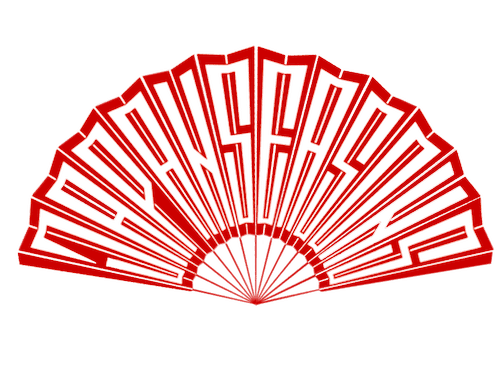Sensoji Temple, located in Tokyo’s historic Asakusa district, is one of the city’s most revered and iconic landmarks. Believed to have been founded in the 7th century, the temple is dedicated to the Bodhisattva Kannon, the Goddess of Mercy. As you approach the temple, you pass through the vibrant Kaminarimon Gate, adorned with a massive red lantern. A bustling market street called Nakamise-dori leads you to the temple’s main hall, where visitors can admire the intricate architecture and serene atmosphere. Sensoji Temple is not only a religious site but also a cultural treasure, offering a glimpse into Tokyo’s rich history and spiritual heritage.
- Tours
- Setsubun Festival
Seasonal Tour “Setsubun Festival 2025”
Welcome to our winter tour for the Setsubun Festival! This is a unique opportunity to experience Japan in winter, a particularly fascinating time of year. You will have the chance to visit hot springs (“onsen”) and see adorable monkeys warming themselves in them. The tour includes a visit to the Black Crow Castle Matsumoto-jo, the fairytale village of Shirakawa-go, and the mountain monastery Koya-san. The highlight of the tour will be attending the Setsubun Festival in Kyoto and Nara on February 2nd and 3rd. We will drive away the demons that appear at this juncture between winter and spring, watch geisha dances on the stage of a Shinto shrine, eat beans, and enjoy eho-maki, special sushi rolls eaten only during this festival.
Sign up for our tour and don’t miss the chance to visit Japan in winter!
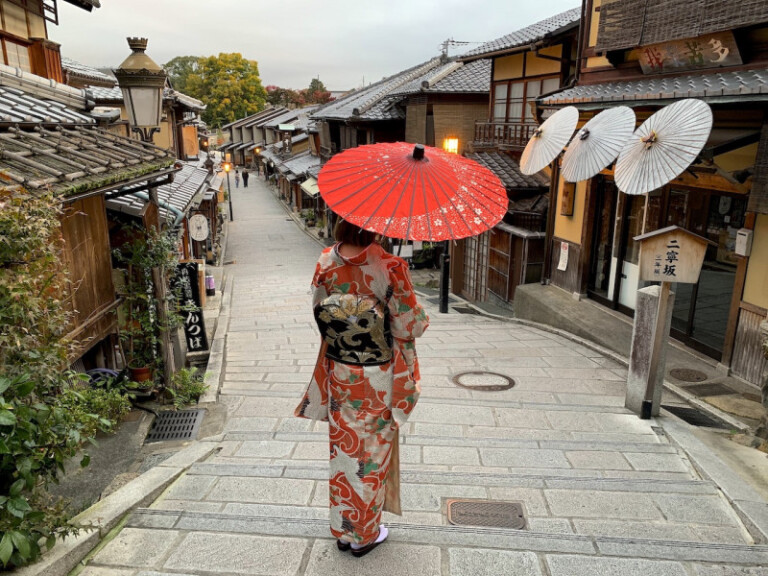
CUSTOMIZED ITINERARY FOR YOUR DATES
Dates
- 28 January — 5 February 2025
Duration
- 9 days / 8 nights
Price
- On request
Itinerary
- Tokyo → Matsumoto → Yudanaka → Jigokudani-Toyama → Shirakawago → Kyoto → Nara → Koya → Osaka
Daily itinerary
January 28, 2025 (TUE)
Self-transfer to Tokyo
Check-in at the hotel, rest
Meet your tour guide at the hotel lobby
Evening walking tour around Tokyo: Asakusa area, Sensoji Temple, Shibuya Crossing
After arriving in Japan and taking a brief rest at the hotel, we’ll embark on a sightseeing stroll around Tokyo. Our itinerary includes stops at the Asakusa area and Sensoji Temple, as well as the world-known Shibuya Crossing.
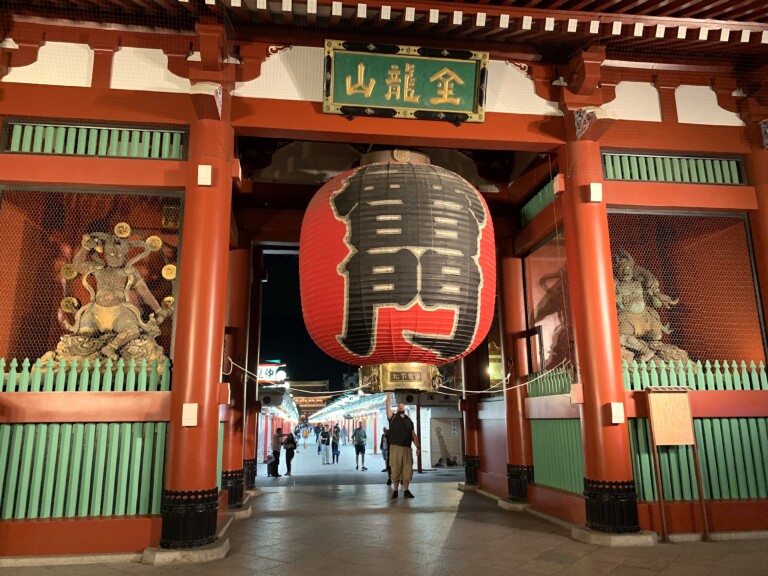
Sensoji Temple
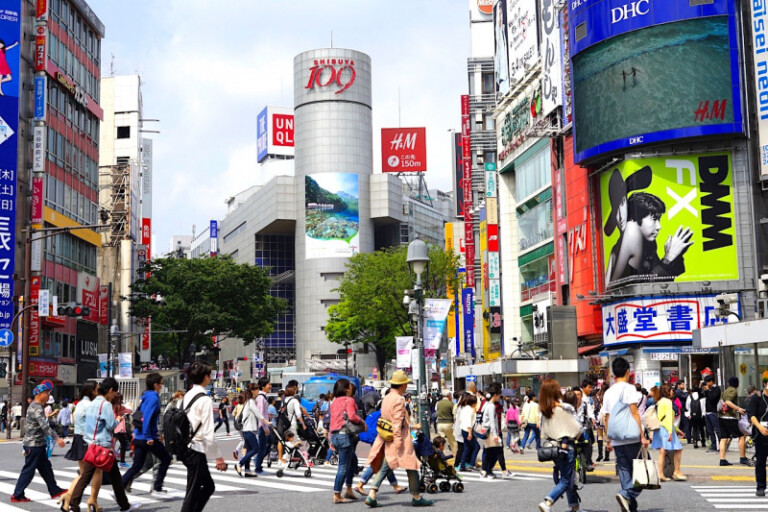
Shibuya Area
Shibuya scramble crossing is one of the busiest crossings in Tokyo. The green light comes on from four directions at once, and several hundred people (during peak hours, the number can reach 1,000) rush simultaneously in all directions, managing to dodge each other with ease built up over the years.
For its picturesque yet orderly crowds, the crossing is beloved by filmmakers, and people worldwide are familiar with it from TV series, movies, and commercial videos. The best spot to watch the hypnotic flow of people is the Starbucks coffee shop on the 2nd floor of the building on the north side of the crossing.
There is also a statue of the faithful dog Hachiko near Shibuya Station, where he used to meet his master, a professor at Tokyo University, every day. After the professor’s sudden death, the dog came to the station every day for nine years, waiting for his master to return. Hachiko became the symbol of loyalty.
January 29, 2025 (WED)
Meet your tour guide at the hotel lobby
Move to Matsumoto by train
Matsumoto sightseeing: Matsumoto Castle, walk around Matsumoto city
Check-in at the hotel, rest
On the next day of our Japan trip, we’ll take a train to the city of Matsumoto. After storing our suitcases at the hotel, we’ll go for a walk around the city. We’ll visit Matsumoto-jo, also known as the Black Raven Castle, and stroll along the charming streets of Matsumoto.
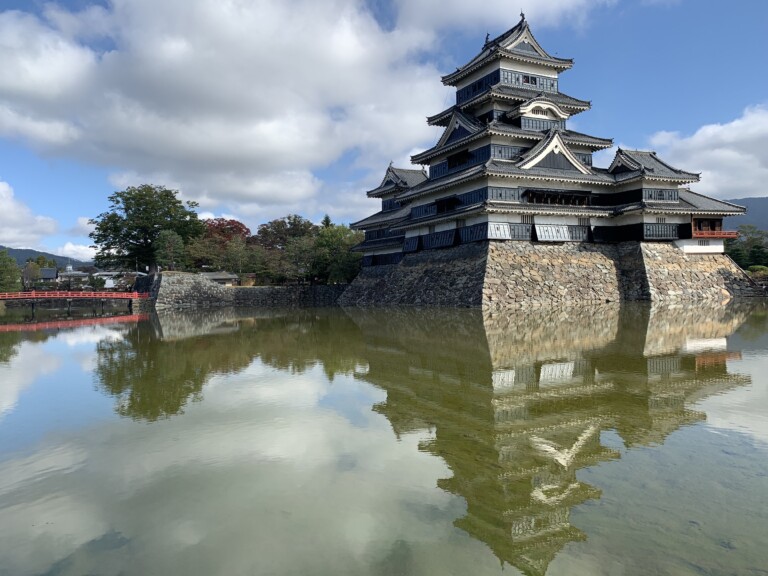
Matsumoto Castle
Matsumoto Castle is one of Japan’s three most famous and beautiful castles (together with the Himeji and Kumamoto castles). The main tower of the castle is a National Treasure of Japan. The castle has the unofficial name “Black Crow Castle” for the black color of its walls.
January 30, 2025 (THU)
Meet your tour guide at the hotel lobby
Move to Yudanaka-onsen by train
Check-in at the national-style ryokan hotel
Dinner at the hotel, rest in the hot springs onsen
Today, we’re heading to Nagano Prefecture, where we’ll be staying at a traditional Japanese-style ryokan hotel. In the evening, we’ll enjoy dinner at the hotel and unwind in the geothermal baths.
January 31, 2025 (FRI)
Meet your tour guide at the hotel lobby
Visit Wild snow monkey park Jigokudani Yaen-koen
Transfer to the Shinkansen station, move to Toyama by shinkansen bullet train
Move to Amaharashi Quasi-national park
Adorable snow monkeys relaxing in the hot springs! This destination is a dream for many. Today, you’ll get the chance to observe these playful monkeys up close and, of course, capture some photos. Later in the evening, we’ll head over to the neighboring Toyama Prefecture, where you’ll find the Amaharashi Quasi-National Park.
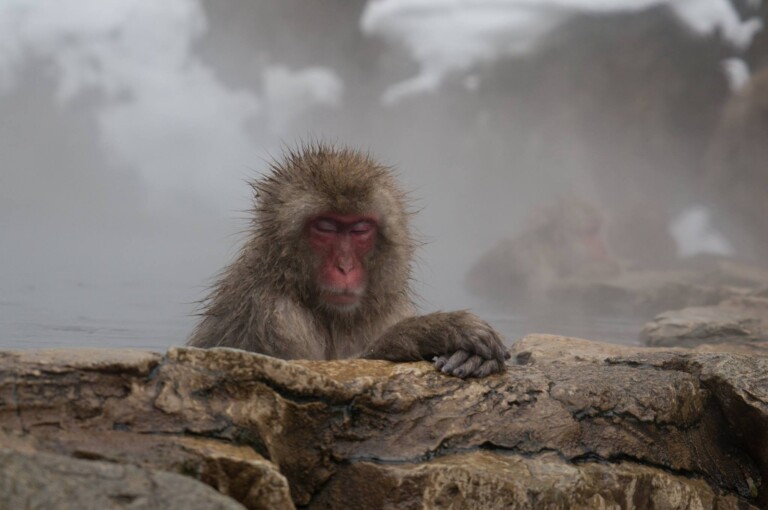
Jigokudani Snow Monkey Park
Snow Monkey Park Jigokudani Yaen-koen is a well-known place in Japan located in the Nagano Prefecture. Here, during winter, wild Japanese macaques, or snow monkeys, visit hot springs to warm up and chill. It’s special to see these monkeys enjoying the warm water while it’s snowing around. The park offers a chance to watch these monkeys closely in their natural habitat, making it a popular spot for people from Japan and other countries who want to see this interesting behavior.
February 1, 2025 (SAT)
Meet your tour guide at the hotel lobby
Transfer to Shirakawa-go, a World Heritage Mountain Village
Walking tour around Shirakawa-go village: observation deck, gassho style traditional house
Transfer to the station
Move to Kyoto by Limited Express train and Shinkansen bullet train
Check-in to the hotel, rest
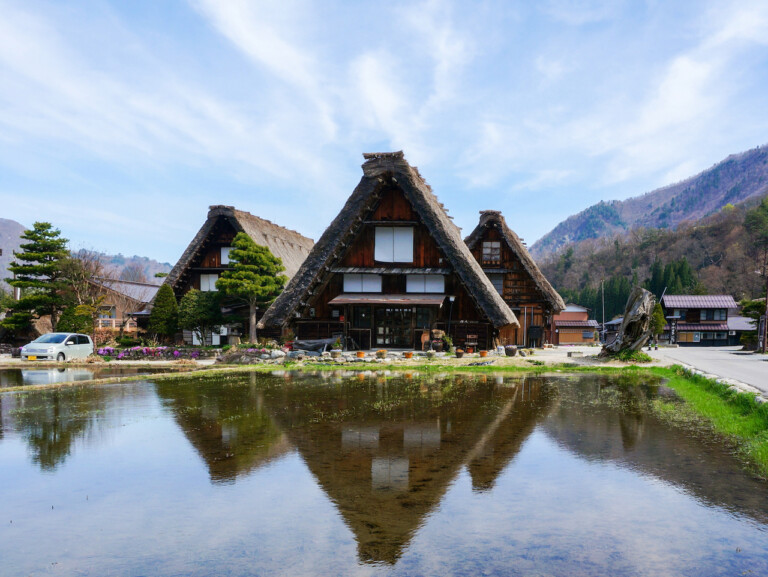
Shirakawa-go village
Shirakawa-go village is a picturesque destination located in Japan. One of its highlights is the observation deck, which provides a breathtaking view of the entire village and its surroundings. The village is famous for its unique gassho-style traditional houses, which have steep thatched roofs resembling hands in prayer. These roofs are designed to withstand heavy snowfall in the winter months. The combination of the observation deck’s panoramic view and the charming gassho-style houses makes Shirakawa-go village a captivating and culturally rich experience for visitors.
February 2, 2025 (SUN)
Meet your tour guide at the hotel lobby
Kyoto sightseeing: Golden Pavilion, Ryoanji Temple, Maiko and Geiko dance and mamemaki (bean-throwing ceremony) at Yasaka Shrine, Kiyomizu-dera Temple
Return to the hotel
During our tour of Kyoto, we will visit two iconic sites: the Golden Pavilion Kinkaku-ji and the rock garden of Ryoan-ji Temple. It rarely snows in Kyoto, but we might be lucky enough to witness the rare and dreamlike sight of the Golden Pavilion covered in snow. In the afternoon, we will immerse ourselves in the traditional alleys of Kyoto and watch a dance performance by maiko and geiko at Yasaka Shrine.
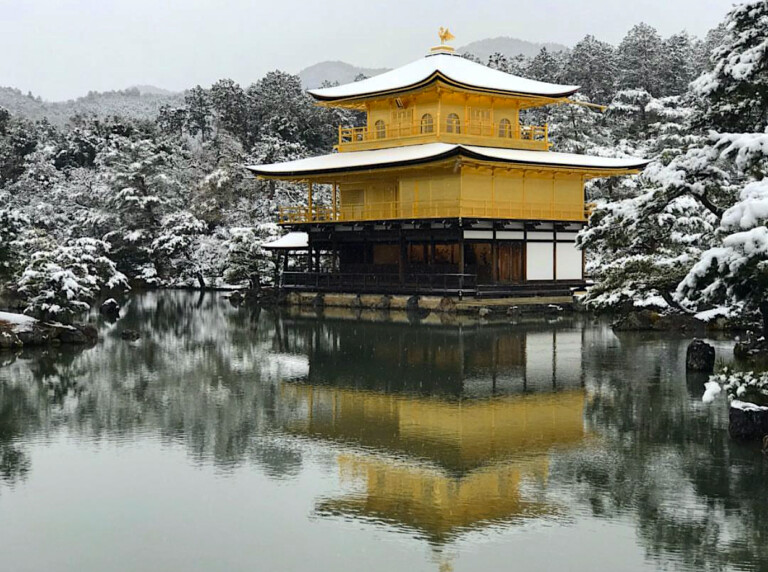
Winter Kinkakuji Temple
Kinkaku-ji Temple, often called the Golden Temple, is one of Japan’s most famous temples and Kyoto’s main attractions. Built at the end of the 14th century, this complex, with its three-story pavilion covered with gold leaf, captivated the minds of its contemporaries. The famous Japanese writer Yukio Mishima captured its fate and glory in the novel “The Golden Temple.” Today Kinkaku-ji Temple is a must-see on any traveler’s itinerary in Japan. In addition to the famous pavilion, the UNESCO World Heritage Site also features a traditional walking garden, small waterfalls, and a tea house, representing the culture of the samurai era.
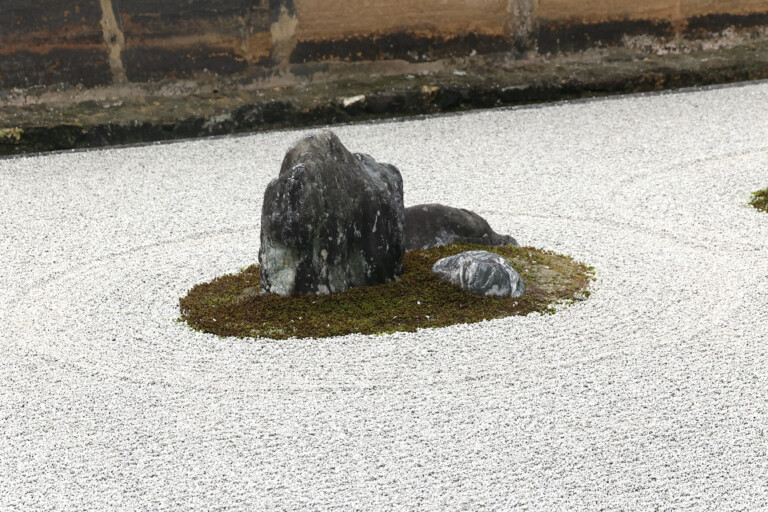
Ryoan-ji Temple
Ryōan-ji Temple, located in northern Kyoto, was founded in the mid-15th century. The famous rock garden was also established at the same time. The garden is now considered one of the best in Japan and is protected as a UNESCO World Heritage Site.
For centuries, the Ryōan-ji Temple garden has attracted visitors trying to solve its mystery: why can you see only 14 of the 15 stones? And what does the composition of sand and rocks represent?
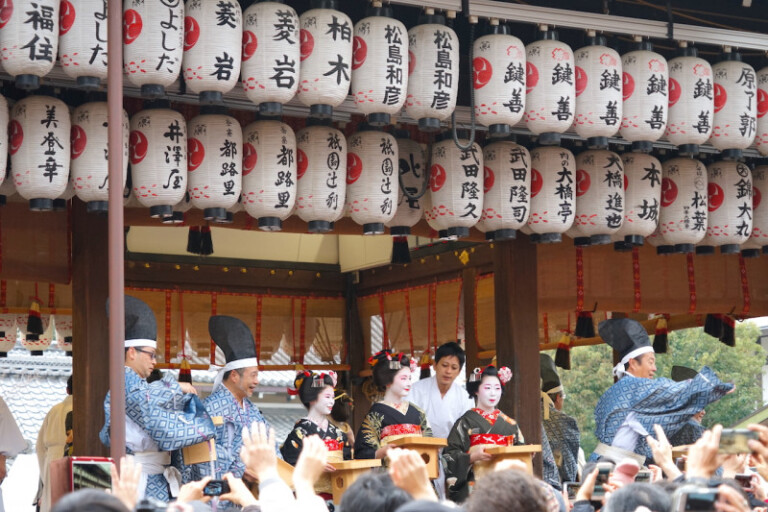
Kyoto Setsubun
Setsubun, a traditional Japanese festival, holds a special place in the hearts of Kyoto’s residents. Celebrated on both February 2nd and 3rd, Setsubun marks the transition from winter to spring. One of the most vibrant Setsubun events takes place at Yasaka Shrine, where locals and tourists gather to partake in the mamemaki, or bean-throwing ceremony.
During this lively ritual, participants chant “Oni wa soto, fuku wa uchi” (Demons out, good fortune in) and throw roasted soybeans to drive away evil spirits and welcome positive energy for the coming year. The event is not only fun but also symbolic, reflecting the cultural belief in purifying one’s surroundings and inviting good luck.
The Yasaka Shrine’s Setsubun festivities also offer a chance to witness traditional dances performed by Maiko and Geiko, adding an exquisite touch of Kyoto’s timeless elegance. Setsubun in Kyoto blends ancient customs with the city’s vibrant spirit, creating an unforgettable experience that showcases the essence of Japanese culture and community.
February 3, 2025 (MON)
Meet your tour guide at the hotel lobby
Setsubun Festival at Kyoto and Nara: Todaiji Temple, Nara Deer park
Return to the hotel
Today, we’ll engage in the Setsubun Festival events in Kyoto, and later, we’ll make our way to Nara, the ancient capital, to marvel at the beautifully lit lanterns.
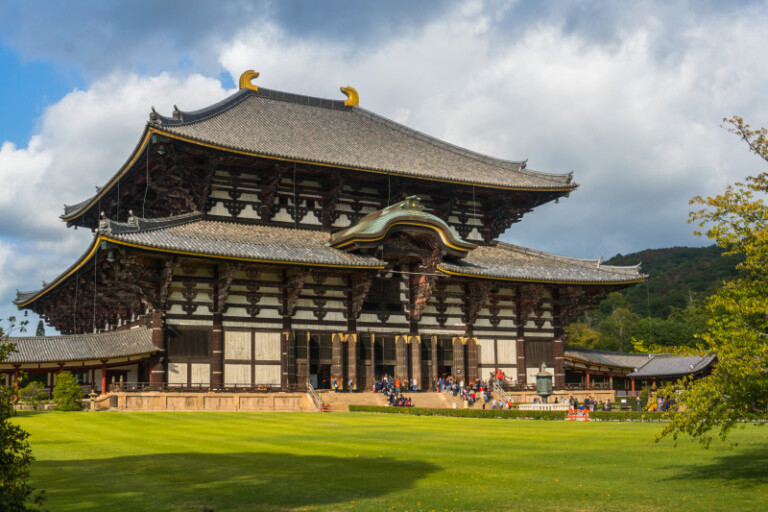
Todai-ji Temple
Todai-ji is a Buddhist temple complex whose main building is one of the largest wooden structures in the world. Built in the mid-8th century by order of the emperor with donations from all over the country, the temple features the biggest bronze statue of Buddha in Japan. Almost all the bronze produced in Japan at the time was used to cast the colossal sculpture. The complex also has several unique wooden structures, including the giant Nandaimon Gate with the famous Nio guard figures, the Bell Tower, and Nigatsu-do Hall. The entire complex is a UNESCO World Heritage Site.
February 4, 2025 (TUE)
Meet your tour guide at the hotel lobby
Transfer to the sacred mountain Koya-san
Check-in at the monastery hotel "shukubo"
Walk around the temple town, visit Kongobuji Temple and ancient Okunoin Buddhist cemetery
Vegetarian dinner at the hotel, rest
Start your journey by heading to the sacred mountain Koya-san. Once you reach there, settle in at the monastery hotel called “shukubo.” Explore the temple town, where you can visit the impressive Kongobuji Temple and the historic Okunoin Buddhist cemetery. At the end of the day, enjoy a healthy vegetarian dinner at the “shukubo”, and relax.
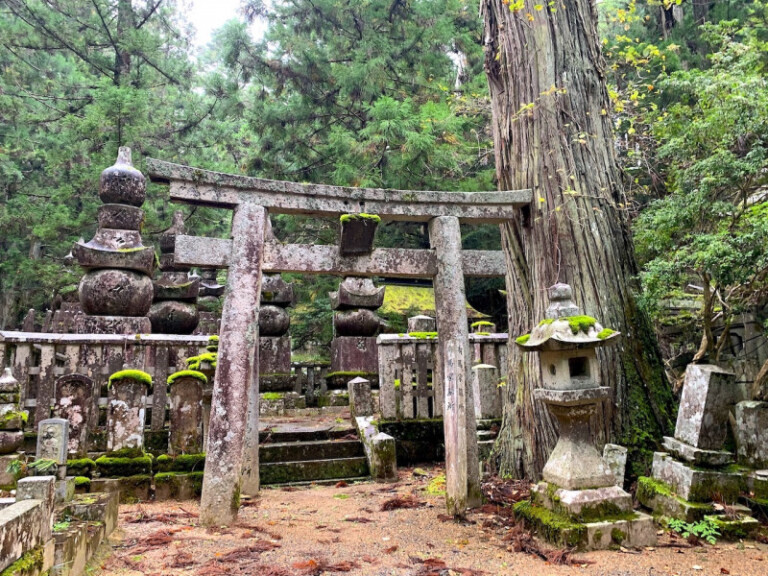
Koya-san (Mount Koya)
The Koya Mountain Monastery Complex is one of the most important centers of Buddhism in Japan, founded 1,200 years ago by the monk Kukai. In addition to its religious and historical value, it is also an important cultural monument. The majestic architecture of the complex, paintings by famous artists, unique artifacts accumulated over hundreds of years, the largest rock garden, and one of the oldest cemeteries in Japan – all of it provide a rare opportunity to have an insight into the Japanese philosophy of life and death.
February 5, 2025 (WED)
Meet your tour guide at the hotel lobby
Transfer to Osaka
End of the tour
